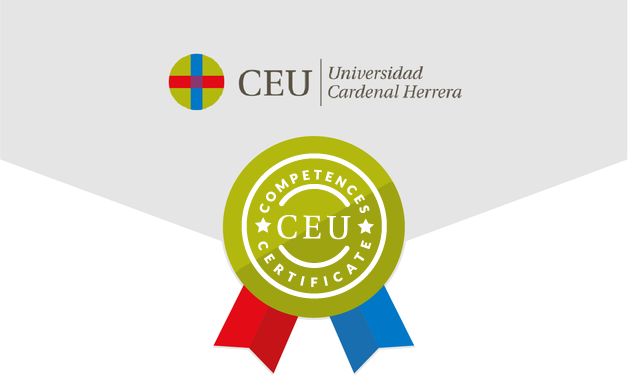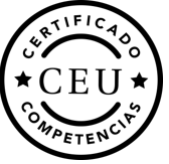In other posts, we’ve talked about the CEU Microcredential Ecosystem and how we use Open Badges 3.0, but we haven’t talked yet about how we got started. So, here’s a quick overview of the first stage of what has been an exciting journey for us – because it’s easier to understand the present when you can see how we got here.

As Mons. García Aracil, one of the founders of CEU in Valencia, once said, “the path barely existed when we started out – so we can call it an adventure.” This sentence both inspires and represents our experience, as our path to this point has been full of discoveries, moments of learning, mistakes and many, many challenges which we have faced and overcome. There were no landmarks, milestones or models for us to follow – it’s a path we’ve had to build for ourselves as we travelled along it. It’s a journey that we are proud to have made and one which leaves us well-equipped to continue to lead the way in the certification of student competencies.
It all began in 2012-2013 with the first CEU Soft Skills model for undergraduate students. This provided the framework for the issue in 2015 of the first Certificate of Competencies, which is the origin of today’s CEU Microcredential Ecosystem.
We were already aware back then that employers wanted to know what skills students had, what learning experiences made some students stand out from others, and what the most important things to look for were during a selection process. This was the beginning of skills-based hiring – something of a buzzword nowadays.
We also knew that undergraduates develop a range of skills and capabilities which complement what they achieve in more formal academic terms. If you know what to look for, this is obvious. At the University, we felt that we had a duty to make our students’ skills more visible to employers. Our solution felt like the perfect fit.
This is how the Certificate of Competencies began life, with the aim being to showcase the range of skills and competencies students acquired during their time at the University, going beyond their academic knowledge and discipline-specific technical skills. The idea was for the Certificate to be an added extra to the degree certificate itself and the European Diploma Supplement, which could be shown to potential employers and give them a more in-depth view of our graduates’ capabilities.

Chief characteristics of the Certificate of Competencies:
- It was based on a skills-based approach, aiming to describe each student’s competencies. It was different from traditional certificates which focus on participation in an event or completion of a learning experience. So, it was not a certificate for a formal qualification, nor did it record attendance at a conference or similar event, but it provided information about what the student had learnt from a skills-based perspective, about what competencies they now possessed. Competency-based hiring is, of course, now much favoured by modern HR professionals.
- It had a coherent structure which provided a complete profile of CEU graduates, detailing the discipline-specific competencies they possessed as graduates of a specific degree, together with their soft skills, instrumental skills and skills for success in the workplace.
- A range of information was given in different fields for each competency: the competency type, a description, the evidence for possession of the competency, and the year in which it was achieved. The information for each competency was available in three languages – Spanish, English and French – to reflect the career needs and aspirations of home and international students.
- Every year, the Competency Catalogue would be published, which listed all the competencies which students could gain recognition for.
- An in-house database was created, including the Competency Catalogue for each year, and the competencies which students achieved recognition for were recorded in it. This meant that information was recorded for each student on an annual basis and then added to their evolving Certificate of Competencies.
- When the students graduated and then requested their official degree certificate, they could also request their Certificate of Competencies. In other words, they could only get the Certificate after completing their studies.
- The Certificates were issued as PDFs, in Spanish, English and French, detailing all the competencies that the students had achieved during their degrees. Each Certificate was signed by the academic secretary responsible for their degree.
- The progress of the Certificate of Competencies initiative was presented every year to the University’s International Advisory Board, who provided us with valuable feedback for its development and improvement.
Key achievements of the Certificate of Competencies initiative:
- The early exploration of the certification of competencies before this became part of the mainstream conversation.
- The application of procedures used inthe field of organizational psychology: descriptions of competencies as observable behaviour.
- The informational content behind each competency – the ‘fields’ in our initial database – proved to be analogous to the metadata of the embryonic Open Badges. This meant that it was a straightforward task to transform the competency fields into the metadata of digital badges.
- The early adoption of certain concepts which would later grow in importance:
- Modularity: the Certificate of the Competencies had a modular structure similar to that of today’s microcredentials. In today’s terminology, it gave a granular view of the student’s capabilities and competencies.
- Stackability. Every year, new competencies and new evidentiary descriptions for competencies were added.
- Students could find out what competencies they had acheived each year, providing them with motivation to acheive more competencies or gain more evidence for the ones they already possessed. They had control over their own learning and could direct it in the way they wanted.
- The Certificate was issued in three languages. This was consistent with the University’s internationalization strategy, as one of its goals was to improve student employability in a globalized world. Translating all the competencies into English and French was a demanding and resource-hungry process, but the effort was certainly worth it.
Main pain points for the Certificate of Competencies initiative:
- Doing something which hadn’t been done before, travelling along a path for which there were no milestones or landmarks to be guided by. Initial project decisions had to be undertaken on the basis of intuition which created some uncertainty for project development. In recent years, the intuition on which these decisions was based has proved to be well-founded, but even today we feel that our project is something of an outlier, at least in the environment we operate in.
- We didn’t always take the shortest route. Sometimes we had to discard ideas and features which we had worked on for months at a time.
- Every year, we would review the Certificate’s structure and content. This review would take several months to complete.
- Every year, we would publish the Competency Catalogue for the Certificate. However, due to the amount of time it took us to review all the material, it was published when the academic year was already well underway, meaning that students couldn’t look at the Catalogue before planning their activities for the year.
- The implementation of the project was difficult and burdensome. Several applications had to be developed for the project to function. This required the support of the IT department, who are always in high demand in every organization. Other difficulties included collating the data from the undergraduates, feeding the data into the database, integrating the different applications, such as the database and the certificate issuing platform, etc.
- Communicating the project to others was a major challenge: complex projects can be complex to explain, especially when there are no similar initiatives to compare it to. Ensuring that all the students and other stakeholders were aware of what the project could offer was not an easy task.

This was how the Certificate of Competencies project started out at the CEU Cardenal Herrera University. Today, this Certificate no longer exists, but it provided the springboard for the next leap we took. In 2019, a major transformation took place. In fact, two of them:
- A digital transformation, as we began using Open Badges as our method to certify student competencies.
- A conceptual transformation, as we adopted a new emerging term: the microcredential.
But that’s a whole other story.



